Social Media Toolkit
Introduction
When social media is used effectively, it can play a key role in supporting your museum or gallery’s marketing and engagement objectives. This guide will help you develop a digital presence that’s right for you and your audiences.
Strong visuals
Bold and interesting images will attract attention and inspire engagement. Visual strengths can include:
- Your building
- Your wider location and community
- Collections, photographic records, and artwork
- People (staff, volunteers, visitors, project participants)
Once you’ve identified your visual strengths, you’ll need a way to capture them. Do you have staff or volunteers who enjoy taking photos? Do you have an existing bank of photography to draw on?
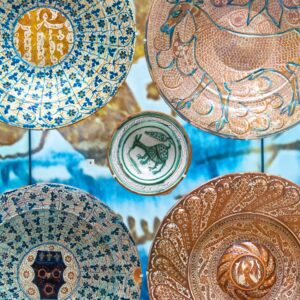
Unique Personality
The overall tone of your social media content can make a strong impression. It will resonate with certain audiences and help them to anticipate the experience of an in-person visit to your museum or gallery.
Think about the values and general mood of your venue, and how you can convey that online. Are you aiming for serious, friendly, or off-the-wall content? Do you want to offer in-depth analysis, or keep things short and snappy? Should it be family friendly, or aimed at specialists?
No matter your approach, make sure to find a voice which feels personable and authentic.
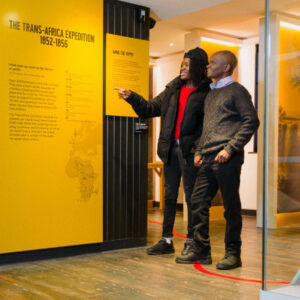
Target Audience
It’s helpful to consider who you’re trying to reach with your social media content, and how you can engage with them effectively. If you’re not sure about your target audience, you can read our dedicated advice guide on the topic.
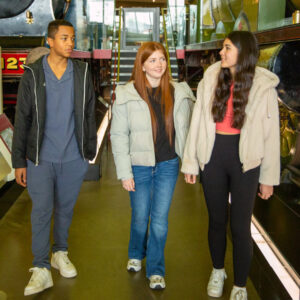
Capacity
Your availability informs the sort of content you can create and the platforms which you can use effectively. You’ll need the time to monitor your social media accounts, too.
Building an online presence takes planning, consistency, time, and resources. Focus on developing an effective presence on one or two platforms instead of spreading yourself too thin.
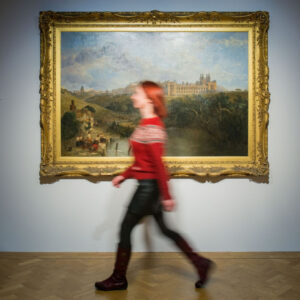
Which platforms should I use?
Each social media platform has unique features which appeal to different types of people. The time and effort required to create content also varies from platform to platform.
To decide which platforms are best for you, consider the strengths of your museum and your team, your capacity, and your target audience.
Here are some of the major platforms used by museums:
Ideal for sharing a wide range of visual and written content. Facebook focusses on videos, strong images, organising events, and building communities. It’s a popular way to run low-cost advertising and fundraising campaigns.
Key audiences: ages 30+
Top tips: Your Facebook audience may include potential first-time visitors to your museum. Make sure your profile features key information such as a brief description of your museum, your location, and your opening hours.
Examples:
- Gairloch Museum
- Glencoe Folk Museum
- Mount Stuart
- Scottish Crannog Centre
- The Scottish Fisheries Museum
Strong visuals are essential for Instagram. This platform has traditionally focused on photography, but is now placing an increased emphasis on the use of short videos called Reels. Instagram is popular for low-cost advertising, particularly for merchandise.
Key audiences: Gen Z and millennials (around 16 to 41 years old)
Top tips: Sharp, clear and colourful photography is ideal. Text-heavy graphics don’t generate much attention. It isn’t possible to include links in image descriptions, making it difficult to promote events and website content.
Instagram is encouraging its users to create more video content. It’s doing this by exposing video content to wider audiences. As a result, Reels can be a very effective way of reaching lots of people and generating new followers.
Examples:
This work-oriented social media platform is ideal for sharing business updates, projects and partnerships, and professional milestones.
Key audiences: heritage and culture sector professionals, partner organisations.
Top tips: Scottish museums and galleries will have a small but focused target audience on LinkedIn. Popular posts can circulate for several weeks.
Examples:
TikTok
TikTok specialises in sharing creative and informative short-form video content. Although videos can take time to plan, create, and edit, they have the potential to reach a huge audience of younger people.
Key audiences: Gen Z (around 12 to 26 years old)
Top tips: TikTok videos are short and sharp, so take time to plan exactly what content you want to get across and don’t try to fit everything in. One topic could be split into multiple TikTok videos.
Examples:
X (formerly Twitter)
This platform is a way to communicate news, take part in conversations, interact with other organisations, and share on-the-spot updates. There have been multiple challenges on this platform over the last year causing a drop in reach and engagement for some organisations.
Key audiences: Professionals, partner organisations, politically engaged.
Top tips: Tweets generally have a short lifespan, and the 240 character limit can make it difficult to convey in-depth ideas. Tweets can be used to point people towards information on your website, however links outside of the X platform are punished by the algorithm and may experience a smaller reach.
Examples:
- Culture Perth & Kinross Museums
- Glasgow Women’s Library
- Caithness Broch Project
- Orkney Library
- The Watt Institution
YouTube
YouTube is the leading platform for sharing long-form video content. It takes significant resources and sustained campaigns of regular content for museums to build an audience on YouTube.
Key audiences: YouTube is used by a broad range of audiences.
Top tips: It can be really tricky to build up a presence on YouTube – very few museums or galleries have large followings on this platform, and it usually requires a consistent pattern of regular uploads (and a bit of luck with viral content!).
Videos on these big channels usually have a tight focus and are often designed to form part of a larger series. When a viewer understands that one video is part of a series, it’s a lot easier to get them to binge the rest of a channel’s content.
YouTube is following in the footsteps of TikTok and Instagram and encouraging content creators to share brief video clips called Shorts. You can try experimenting with Shorts by editing down your longer YouTube videos.
Examples:
Creating engaging content
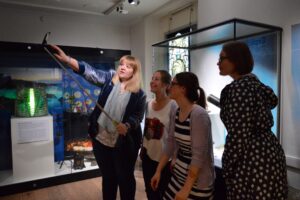
Anyone can be a content creator. You might want to encourage staff staff and your museum or gallery to write about their work for social media, or see if there are any volunteers who enjoy taking photos. You could even recruit a volunteer who is looking to get more experience of digital marketing, or take on a Digital Marketing Modern Apprentice.
You can also pay local influencers – people with a large social media following – to visit your museum or gallery. This could involve offering them behind-the-scenes access or a private viewing of an exhibition. Hiring an influencer will enable your organisation to reach a ready-made online audience.
Find out how to identify, approach, and work with influencers by reading our guide.
There are lots of creative ways to share content over social media. Here are some suggestions which can be adapted to a range of platforms:
- Museum object features. This can be themed: for example, your team’s favourite objects, hidden treasures from your stores, or mystery objects.
- Acknowledge anniversaries, special occasions, and current events by sharing a relevant object, image, or story. Check out our list of annual awareness events for inspiration.
- Behind-the-scenes insights into collections work, exhibitions planning, upcoming events, research, and more.
- Photos from events and activities. Make sure to get written consent before sharing a person’s photo.
- Volunteer/staff spotlight. Make sure to get consent first. Explain what members of your team do, and why they enjoy it. You could even combine this with a ‘call to action’ for volunteering.
- Product spotlights. Do you have new stock in your shop, or seasonal produce in your café? If you’re looking for inspiration, check out Museum Shop Sunday on Instagram.
- Event promotions. Arrange a photoshoot to show your audience what your event will involve.
- Demonstrations of crafts, objects, and activities.
- Throwbacks to past exhibitions, vintage photography, and local history.
- A square-shaped video (aspect ratio 1:1) will take up more space than landscape videos on social media newsfeeds.
- Film TikTok and Instagram Reels in portrait dimensions to ensure that the video fills mobile screens.
- As most people browse social media with their sound off, it’s important to grab their attention by including captions where possible.
- A video should immediately ‘hook’ someone with a strong opening visual, as many viewers will only spend a couple of seconds deciding whether to keep watching or move on.
- Digital Culture Network have useful guidance on producing video content.
- Try to make sure that the images you use are bright, in-focus, and properly cropped.
- Always use an image when posting on social media, as this will help your message reach more people. If you’re posting a message but aren’t sure what image to use, you could simply share a generic photo of your museum or gallery.
- Adding alt-text to an image – a simple description of its content – makes your social media more accessible to people with visual impairments. Alt-text is also picked up by search engines, making it easier for people to find your content online.
- Photos of diverse visitors in your venue will help to build a more inclusive audience.
- Our marketing guide has further advice on how to take and share photos.
- Remember to break up text into short, manageable paragraphs. It’s also important to hook people in with an attention-grabbing first sentence. You might find success by starting your post with a big statement, a question, or a quote!
- When used sparingly, emojis can be a great way to catch the eye and lighten the tone. ✨
- Emojis are converted into written descriptions by text-to-speech tools. This means that long rows of emojis can provide a barrier to accessibility for people with visual impairments.
- Some people like to customise social media content by pasting creative ‘fonts’ into their posts. These ‘fonts’ – which sometimes look like 𝖙𝖍𝖎𝖘, 𝓽𝓱𝓲𝓼, or 𝕥𝕙𝕚𝕤 – are actually symbols which can’t be read by text-to-speech devices. Ensure accessibility by avoiding the use of these symbols.
- It’s sometimes possible to shorten webpage URLs when sharing them on websites and over social media. For example, https://www.museumsgalleriesscotland.org.uk/ and museumsgalleriesscotland.org.uk will both work as links on Facebook and X – but the second option is cleaner and easier to read.
- People like to see and hear about other people! Human stories can be a good way to engage with your audience.
- You can gain supporters and build relationships with social media users by responding to comments and messages. However, don’t feel pressured to engage with any negative or unconstructive attention. Some platforms give you the option to either hide a person’s comment without them knowing, or to send a private reply.
- You can add links to your social media accounts on your website and promote your accounts on posters at your venue building. You can use QR codes to point people directly towards websites.
- Front-of-house staff and volunteers can highlight your organisation’s social media accounts when engaging with visitors.
Planning and scheduling
Proper planning is essential to maintaining an effective social media presence.
Create a social media calendar
Set up a simple social media calendar in Word or Excel, and use it to identify key dates for creating and sharing content.
Send this calendar with staff and volunteers to get their input: they might be aware of other events, anniversaries, or museum projects which are worth highlighting.
Ensure this calendar remains accurate by reviewing it regularly.
Set simple objectives
Think of a target for the number of social media posts you plan to share. You could start by aiming to post once a week, increasing this number only if you feel you have capacity.
A consistent pattern of quality content will signal to people that your museum or gallery is active, reliable, and open to engagement.
Encourage a sense of shared responsibility
Remind staff and volunteers to consider social media when planning new projects and events. By embedding content creation into the planning process, everyone in your organisation can play a part in identifying opportunities to generate content.
If multiple people are creating content for your social media accounts, you can keep things consistent by writing and sharing simple guidance on the tone and standards expected of your content, and the key audiences which you’re trying to reach.
Use scheduling tools
By drafting and scheduling content, you and your team will have more freedom to plan ahead. You can build up a bank of content when it’s quiet, and schedule posts for busy periods, evenings, and time off.
Several social media platforms have built-in scheduling sites. Facebook and Instagram have Creator Studio, while X has TweetDeck. LinkedIn has a scheduling option built into its posts.
Tools such as Buffer and Hootsuite enable you to schedule content across several social media platforms and accounts at the same time. However, you may need to pay to unlock certain features.
Making and measuring impact
To build an effective social media presence, you’ll need to foster meaningful relationships with your audience. The best museum or gallery social media accounts are responsive, helpful, and approachable.
Make sure to monitor your accounts regularly. Doing a daily check during work hours will help you to keep on top of new mentions, messages, comments, and queries.
Establish a connection with your audience by responding to positive feedback and constructive comments.
You can also raise the profile of your social media by tailoring content to meet the expectations and interests of your audience. Ask the following questions:
Are your followers local to the area? What age and gender are they? What are their interests? Explore how you can maintain existing audiences while expanding your content to attract new demographics.
Facebook and Instagram are busiest in the evenings, usually between 6pm and 9pm. Posts that are shared around this time will usually reach more people. Play about with timings and see what works best for your museum’s followers.
Follow the likes! If a piece of content performs well, ask yourself why. Then try to replicate that success.
Don’t be disheartened if something doesn’t get the reaction you’d hoped for. Building a reputation online takes time and dedication.
See what catches your eye when you’re browsing social media. Ask yourself why you paid attention to it and see if that’s something you can achieve on your own social media.
Keep track of your engagement by putting together a monthly report of your reach and the number of followers, shares, and link clicks you have. As your social media output can vary each month, it’s often worthwhile to calculate average engagement and reach per post.
By tracking your progress month-on-month, you can determine the success of your marketing strategy and adjust your methods accordingly.
Additional resources
You’re now on your way to a thriving online presence! If you’re looking for additional support, please contact the MGS marketing team at marketing@museumsgalleriesscotland.org.uk. You can also find lots of great advice on these websites: